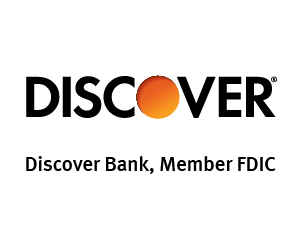Leaving $10,000 in a Bank of America Savings Account Could Cost You Over $400 a Year

Image source: Getty Images
I learned this lesson the hard way.
For years, I had a big chunk of my "emergency fund" sitting in an old-school savings account earning -- brace yourself -- 0.01% APY. That's a whole $1 per year in interest for every $10,000.
Then I discovered high-yield savings accounts (HYSAs). At today's top rates (around 4.00% APY), that same $10,000 could earn over $400 a year. Without lifting a finger.
I'm not here to bash Bank of America (the bank's checking accounts treat millions of people just fine). But if your savings is parked there long term, you're quietly missing out on hundreds of dollars in easy, risk-free interest every single year.
The math on low- vs. high-yield accounts
Right now, Bank of America's standard Advantage Savings account offers a 0.01% APY.
Meanwhile, top online HYSAs are offering rates around the 4.00% range. That's a 400x difference.
Here's what that looks like in real dollars, showing how much interest you'd make in a year depending on your account balance:
| Balance | BofA (0.01% APY) | HYSA (4.00% APY) |
|---|---|---|
| $5,000 | $0.50 | $200 |
| $10,000 | $1 | $400 |
| $25,000 | $2.50 | $1,000 |
That's money you could be putting toward bills, travel, investing -- literally anything more exciting than earning pennies from your bank.
This isn't one of those "too good to be true" things. These high rates are being offered by FDIC-insured banks, meaning your money is just as protected as it is at Bank of America.
In fact, right now you can earn 4.00% APY for balances of $5,000 or more from a big name in online banking. Check out our full CIT Platinum Savings account review to learn more and open an account today.
Pros and cons of an HYSA
High-yield savings accounts aren't perfect for every situation. They're built for growing or storing savings, not day-to-day checking activities.
Here's a quick overview of the pros and cons of high-yield accounts:
They're great for:
- High interest rates. This is the main draw. You'll earn a higher rate than other standard bank accounts.
- FDIC or NCUA insurance. Legit banks offering HYSA accounts are protected up to $250,000 per depositor (or $500k if you've got a joint account)
- Easy transfers. Most banks let you "link" your existing checking account for quick deposits and withdrawals.
- No fees. Most top HYSAs have no monthly maintenance charges. Personally, I have never paid a fee (and you shouldn't either!)
Some downsides:
- Limited in-person access. Many HYSAs are offered by online-only banks.
- Transfer delays. Moving money between accounts can take one to three business days. HYSAs typically don't have debit cards or check-writing capabilities.
- Rates can change. There's no locked-in rate, so as the Federal Reserve changes interest rates, banks will adjust their offered rate too.
When I first switched, my biggest worry was how long transfers would take. Like, what if I needed access to my cash immediately?
But honestly, I've never found it to be an actual issue. If I've got a big bill or need thousands for something, I'll plan ahead. All my transfers have taken one business day so far. Super easy.
How I made the switch
I still keep my everyday big bank checking account -- that's where my paychecks land and where I pay bills from.
It's only my idle cash (my emergency fund and other savings I don't touch often) that lives in my high-yield savings account.
The setup gives me the best of both worlds. I still have the convenience and familiarity of my main bank, plus the high interest from my HYSA.
If you're thinking about doing the same, check out our best high-yield savings accounts list to see today's top rates and find one that's a good fit for you.
Our Research Expert
We're firm believers in the Golden Rule, which is why editorial opinions are ours alone and have not been previously reviewed, approved, or endorsed by included advertisers. Motley Fool Money does not cover all offers on the market. Motley Fool Money is 100% owned and operated by The Motley Fool. Our knowledgeable team of personal finance editors and analysts are employed by The Motley Fool and held to the same set of publishing standards and editorial integrity while maintaining professional separation from the analysts and editors on other Motley Fool brands. Terms may apply to offers listed on this page. APYs are subject to change at any time without notice.


